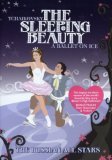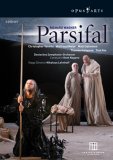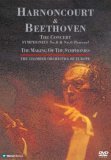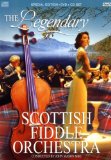 Russian All Star Ice Ballet Group - Russian All-Stars - The Sleeping Beauty | DVD | (09/10/2006)
from £N/A
| Saving you £N/A (N/A%)
| RRP
Russian All Star Ice Ballet Group - Russian All-Stars - The Sleeping Beauty | DVD | (09/10/2006)
from £N/A
| Saving you £N/A (N/A%)
| RRP Tchaikovsky: The Sleeping Beauty - A Ballet On Ice
 Electric Light Orchestra - ELO - Total Rock Review | DVD | (28/08/2006)
from £8.34
| Saving you £3.65 (43.76%)
| RRP
Electric Light Orchestra - ELO - Total Rock Review | DVD | (28/08/2006)
from £8.34
| Saving you £3.65 (43.76%)
| RRP This is the long awaited critical review of the music of the Electric Light Orchestra during the Roy Wood era. This unique independent film traces the development of the band from the tail end of the Move era through the creation of the legendary debut album and on to the birth of Wizzard. The original and classic line up of the band featured the combined talents of Jeff Lynne Bev Bevan and Roy Wood. Drawing on rare footage of the original ELO in performance previously unreleased on DVD this powerful film features the frank and incisive views of a team of leading critics and working musicians. Essential viewing for every ELO fan this is the definitive retrospective of the birth of a legendary band. Featured tracks include 10538 Overture Jeff's Boogie #2 Queen Of The Hours Ball Park Incident and more.
![Idomeneo - Mozart [1974]](/pictures/1011513.jpg) Idomeneo - Mozart | DVD | (29/10/2004)
from £4.82
| Saving you £10.17 (211.00%)
| RRP
Idomeneo - Mozart | DVD | (29/10/2004)
from £4.82
| Saving you £10.17 (211.00%)
| RRP Although Idomeneo is one of Mozart's lesser known operas it sparkles with the composer's usual brilliant melodies. Glyndebourne became the main advocate of the opera in the 50s and 60s and yet despite this Idomeneo was still considered by 1974 something of a rarity.During a ferocious storm Idomeneo the King of Crete makes a vow to Neptune offering a sacrifice (the first human being Idomeneo sees) in return for the god's help in bringing his ship safely to shore. As it turns out this is his own son Idamante. This dilemma can only be solved by the unselfish love of Ilia who is willing to give her life in his stead.Richard Lewis once again confirms his position as the world's leading exponent of this opera in the title role of Idomeneo with Josephine Barstow equally mesmerising in her portrayal of Elettra's agony. This significantly shortened version begins with Idomeneo alone on the beach after having survived the fierce storm. John Cox uses strikingly dark staging echoing the drama of the action and according to Mozart's original directions includes drowning sailors and the infamous Act II sea monster.
 Carlo Maria Giulini | DVD | (03/03/2003)
from £N/A
| Saving you £N/A (N/A%)
| RRP
Carlo Maria Giulini | DVD | (03/03/2003)
from £N/A
| Saving you £N/A (N/A%)
| RRP Recorded at Watford town hall on the 3rd March 1964 Fairfield Hall Croydon on the 2nd of December 1964 and January 12th 1968 this DVD features Carlo Maria Giulini conducting the New Philharmonic Orchestra performing: Mussorgsky - Pictures at an exhibition Motzart - Symphony No. 40 in G minor Manuel de Falla - El Sombrero de tres picos suite No. 2 Verdi - Les Vepres siciliennes overture
 Parsifal - Wagner | DVD | (29/03/2005)
from £41.65
| Saving you £-5.40 (N/A%)
| RRP
Parsifal - Wagner | DVD | (29/03/2005)
from £41.65
| Saving you £-5.40 (N/A%)
| RRP Nikolaus Lehnoff's visionary staging of Wagner's opera for ENO.
![La Damnation De Faust - Berlioz [1989]](/pictures/1036596.jpg) La Damnation De Faust - Berlioz | DVD | (03/01/2006)
from £54.99
| Saving you £-35.00 (N/A%)
| RRP
La Damnation De Faust - Berlioz | DVD | (03/01/2006)
from £54.99
| Saving you £-35.00 (N/A%)
| RRP Hector Berlioz's (1803-1869) legende dramatique about a man named Faust who sells his soul to the devil in exchange for knowledge. Recorded live at the Royal Albert Hall in 1989. Georg Solti conducts.
![Paquita - Deldevez And Minkus [2003]](/pictures/1028251.jpg) Paquita - Deldevez And Minkus | DVD | (26/02/2007)
from £N/A
| Saving you £N/A (N/A%)
| RRP
Paquita - Deldevez And Minkus | DVD | (26/02/2007)
from £N/A
| Saving you £N/A (N/A%)
| RRP A performance of the Edouard Marie Ernest Delvedez and Ludwig Minkus ballet with the original choreography recreated by Pierre Lacotte.
 Nikolaus Harnoncourt - Beethoven - Symphonies No. 8 And No. 6 | DVD | (27/11/2006)
from £N/A
| Saving you £N/A (N/A%)
| RRP
Nikolaus Harnoncourt - Beethoven - Symphonies No. 8 And No. 6 | DVD | (27/11/2006)
from £N/A
| Saving you £N/A (N/A%)
| RRP During a two week period during the 1990 Styriarte Festival in Austria Nikolaus Harnoncourt and the Chamber Orchestra of Europe performed all nine Beethoven symphonies which were also recorded 'live' by Warner Classics for release on CD. The 5-CD set was highly acclaimed winning many awards including the Gramophone Record of the Year Award in 1992.
![Sleeping Beauty - Tchaikovsky [1989]](/pictures/1027876.jpg) Sleeping Beauty - Tchaikovsky | DVD | (01/08/2005)
from £31.50
| Saving you £-16.51 (N/A%)
| RRP
Sleeping Beauty - Tchaikovsky | DVD | (01/08/2005)
from £31.50
| Saving you £-16.51 (N/A%)
| RRP Ballet in Three Acts and a Prologue.
![Sergiu Celibidache Conducts Ravel and Debussy - Bolero/Prelude a L'Apres-midi d'un faune/Iberia/Rhapsodie espagnole/Alborada del gracioso [2008] [1994]](/pictures/1082433.jpg) Sergiu Celibidache Conducts Ravel and Debussy - Bolero/Prelude a L'Apres-midi d'un faune/Iberia/Rhapsodie espagnole/Alborada del gracioso | DVD | (28/04/2008)
from £15.39
| Saving you £7.60 (33.10%)
| RRP
Sergiu Celibidache Conducts Ravel and Debussy - Bolero/Prelude a L'Apres-midi d'un faune/Iberia/Rhapsodie espagnole/Alborada del gracioso | DVD | (28/04/2008)
from £15.39
| Saving you £7.60 (33.10%)
| RRP Sergiu Celibidache Conducts Ravel And Debussy
![Mussorgsky: Pictures At An Exhibition [2000]](/pictures/1013165.jpg) Mussorgsky: Pictures At An Exhibition | DVD | (26/02/2001)
from £N/A
| Saving you £N/A (N/A%)
| RRP
Mussorgsky: Pictures At An Exhibition | DVD | (26/02/2001)
from £N/A
| Saving you £N/A (N/A%)
| RRP From majestic castles and lush gardens to mysterious hidden underground passageways and bustling markets these are some of the indelible images evoked in Mussorgsky's famed 'Pictures At An Exhibition.' This volume of Naxos Musical Journey takes you on a tour of St. Petersburg's opulent castles; through Yalta's delightful fairy-tale garden and then a colorful marketplace filled with exotic birds. A train ride propels you through the haunting Russian landscape. Explore the eerie underg
![Mozart: Requiem [2002]](/pictures/1028417.jpg) Mozart: Requiem | DVD | (02/12/2002)
from £N/A
| Saving you £N/A (N/A%)
| RRP
Mozart: Requiem | DVD | (02/12/2002)
from £N/A
| Saving you £N/A (N/A%)
| RRP Mozart's Requiem makes for another entry in the Naxos label's Musical Journey series, which combines great classics with images appropriate to the composer and work. Here the soundtrack is taken from a Naxos audio CD of the Requiem in its traditional version as completed by Sussmayr (though the DVD doesn't provide this or any other musical information), performed with considerable authority and dramatic weight by the Slovak Philharmonic and Chorus under Zdenek Kosler. The accompanying images begin in the Mozartplatz, Salzburg and encompass suitably bellicose classical paintings, the memorials to the composer and Goethe at the city's Buggarten and on to the Vienna History Museum, the Austrian National Library and the glorious stained glass windows of Linz Cathedral. These artistic treasures are contrasted with the natural glories of the Danube, intensely dramatic images of the sun against a tempestuous sky, and the spectacular Dachstein mountain landscape and glacier, with the breathtaking sight of a cross dominating a mountain almost 10,000 feet high. The scenes are generally well chosen and edited to provide an enjoyable visual tour to accompany one of Mozart's greatest masterpieces. On the DVD: Mozart's Requiem on disc boasts an "E-Z Menu" promising "the most accessible navigation", which is ironic given this is an extremely frustrating and counter-intuitive menu and appears to have been thrown together by a 1980's database designer who has never seen a DVD before. The 4:3 picture is very good, and the sound is equally fine, with the DTS mix having a little more weight and definition than the Dolby Digital 5.1 version. The stereo original is likewise impressive. Unfortunately the ends of several tracks are not allowed to fade out naturally, but are jarringly and abruptly cut off. This is most noticeable at the end of the "Benedictus", and completely ruins the end of the final "Lux Aeterna". The travel notes are useful, but would be more so if they could be superimposed over the programme. To turn the subtitles on one must deselect them. The disc also contains eight trailers. --Gary S Dalkin
![Bizet: Carmen in 3D [Blu-ray] [2011]](/pictures/1158249.jpg) Bizet: Carmen in 3D | Blu Ray | (01/01/2010)
from £26.99
| Saving you £N/A (N/A%)
| RRP
Bizet: Carmen in 3D | Blu Ray | (01/01/2010)
from £26.99
| Saving you £N/A (N/A%)
| RRP  Berg: Wozzeck | DVD | (15/11/2001)
from £34.31
| Saving you £-9.32 (N/A%)
| RRP
Berg: Wozzeck | DVD | (15/11/2001)
from £34.31
| Saving you £-9.32 (N/A%)
| RRP The bleakness of Berg's operatic masterpiece Wozzeck is relatively easy to bring off: the plot, after all, tells of a man who is bullied, cuckolded and mocked by the society around him. What are harder to realise are the gallows humour and pitch-black comedy--and it's those qualities, along with the brilliant acting and edge-of-seat orchestral playing, that make this 1987 Vienna Staatsoper staging a stunning televisual operatic production. Everything works: the simple yet evocative sets translate effortlessly to the small screen, the pacing of the 15 short scenes is worthy of a Hollywood blockbuster and the singing is beautifully focussed. Baritone Franz Grundheber is vocally and dramatically outstanding as Wozzeck, cringing and shuffling around the stage in a bewildered hang-dog manner and yet never losing sight of the character's humanity. Hildegard Behrens (Marie) has rarely sounded better, and switches between Straussian lushness and spiky sluttishness with ease. The direction is also full of wonderful touches, such as Wozzeck squeezing the Captain's nose while he's shaving him (and making his voice sound like a kazoo), and the musicians of the on-stage band being fully integrated into the tavern scene. Ironic, emotionally rich, musically faultless--this one's got it all. On the DVD: the production works beautifully on DVD, and bar one or two moments in the second tavern scene (Act 3, Scene 3) the voices rarely move out of microphone range. There are subtitles in English, German, French and Spanish and four trailers for other Arthaus DVD operas, but no other special features. --Warwick Thomson
![The Kirov Ballet - Celebrates Nijinsky [2002]](/pictures/1028015.jpg) The Kirov Ballet - Celebrates Nijinsky | DVD | (10/07/2015)
from £20.02
| Saving you £6.23 (33.21%)
| RRP
The Kirov Ballet - Celebrates Nijinsky | DVD | (10/07/2015)
from £20.02
| Saving you £6.23 (33.21%)
| RRP The Kirov Ballet Celebrates Nijinsky.Nikolai Rimski-Korsakov - SheherazadeCarl Maria von Weber - Le Spectre De La RoseAlexander Borodin - The Polovtsian DancesIgor Stravinsky - Firebird
 The Scottish Fiddle Orchestra - the Legendary | DVD | (23/07/2007)
from £N/A
| Saving you £N/A (N/A%)
| RRP
The Scottish Fiddle Orchestra - the Legendary | DVD | (23/07/2007)
from £N/A
| Saving you £N/A (N/A%)
| RRP The Scottish Fiddle Orchestra: The Legendary SFO
 New Year's Day Concert 2002 | DVD | (13/02/2002)
from £N/A
| Saving you £N/A (N/A%)
| RRP
New Year's Day Concert 2002 | DVD | (13/02/2002)
from £N/A
| Saving you £N/A (N/A%)
| RRP The annual New Year's Day Concert is the traditional Strauss gala with the Vienna Philharmonic marking the turn of the calendar in the spectacularly beautiful Musikverein. For the first time in 2002 the concert was conducted by Seiji Ozawa and the light-hearted nature of the event finds this always engaging conductor at his most impishly playful. The works of Joseph and Johann Strauss more-or-less alternate, opening with Johann's Zivio! march and closing, 108 minutes later, with the traditional clap-along to the Radetzky-March. Among the polkas and waltzes, including a ravishing encore of the Blue Danube waltz, other highlights include the overture to Die Fledermaus, which gets the second half of the concert off to a rousing start. Johann's little known Perpetuum mobile controversially brings politics to the occasion, being used to mark the introduction of the Euro. Perhaps this is why it is immediately followed by a Danse Diabolique by Joseph Hellmesberger jnr, the one none-Strauss work in the programme? However, sly satire is soon forgotten as the delightful Elisen-Polka sweeps devilish thoughts away with its delightful melody. A wonderful time is had by all and while watching on TV can never recreate the atmosphere of being there it is all still hugely enjoyable. On the DVD: The New Year's Day Concert 2002 has possibly the first classical music DVD "director's cut", as prepared by the ever dependable veteran of classical music videos, Brian Large. What this means is that the four filmed inserts which were included in the broadcast version of the concert appear here as extras, the concert playing complete without ever leaving the hall. These and the concert itself are presented in an excellent 16:9 anamorphic picture. Sound defaults to good PCM stereo but there are options for a superior Dolby Digital 5.0 mix, and a wonderfully rich and atmospheric 5.0 DTS track. There are four trailers for further TDK music DVDs, a picture gallery of Seiji Ozawa, and a tourism promotional video for Vienna with noticeably poorer picture quality than everything else on the disc.--Gary S. Dalkin
![Frederick Ashton's The Dream - American Ballet Theatre Company [2004]](/pictures/1028004.jpg) Frederick Ashton's The Dream - American Ballet Theatre Company | DVD | (22/12/2004)
from £N/A
| Saving you £N/A (N/A%)
| RRP
Frederick Ashton's The Dream - American Ballet Theatre Company | DVD | (22/12/2004)
from £N/A
| Saving you £N/A (N/A%)
| RRP Frederick Ashton's The Dream at the American Ballet Theatre. Based on A Midsummer Night's Dream by William Shakespeare.
![Jazz Legends-Big Bands V2 [1988]](/pictures/1077502.jpg) Jazz Legends-Big Bands V2 | DVD | (29/10/2007)
from £20.00
| Saving you £-10.01 (N/A%)
| RRP
Jazz Legends-Big Bands V2 | DVD | (29/10/2007)
from £20.00
| Saving you £-10.01 (N/A%)
| RRP This second volume of BIg Band Soundies includes some of the finest musicians and band leaders of the Big Band era. These musical films were originally shown in a jukebox machine called a Panoram. Over two thousand of these films were made between 1941 and 1947 featuring many of the most popular recording artists of the day. Soundies were extremely popular, but due to a shortage of production materials during the war, the Panorams themselves were in short supply. The shortage of Panorams ultimately spelled the demise of the soundie in 1947. Nevertheless, they captured on film many superb musicians at the peak of their powers making an irreplaceable contribution to the history of American music during this period.
 Romeo And Juliet | DVD | (03/12/2001)
from £8.26
| Saving you £16.73 (202.54%)
| RRP
Romeo And Juliet | DVD | (03/12/2001)
from £8.26
| Saving you £16.73 (202.54%)
| RRP 
Please wait. Loading...
This site uses cookies.
More details in our privacy policy